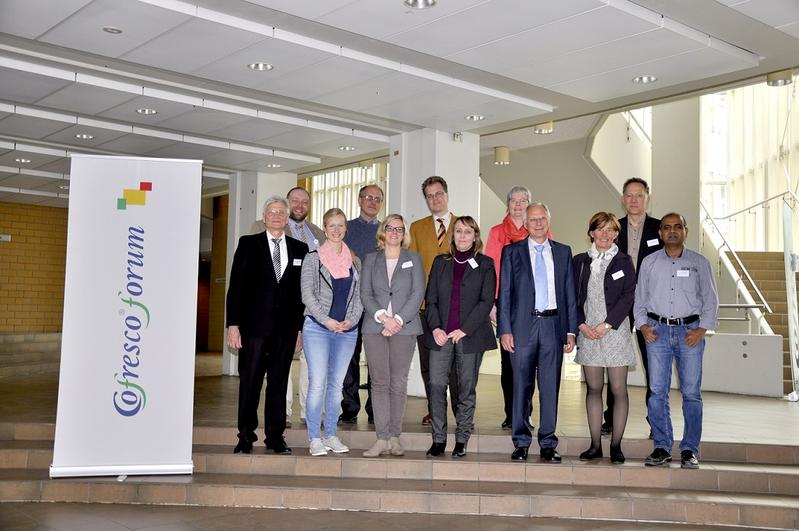Can packaging help avoid food waste?
At the Cofresco Forum’s 10th Round Table, the role played by household packaging in reducing food waste was discussed under the motto “Food Preservation and Sustainability at Home - Future Opportunities for Consumers to Reduce Food Waste”. Lectures by experts on the subject provided a comprehensive overview of current research. The lively event was rounded off by a trip to the Research Center for Emerging Infections and Zoonosis (RIZ) opened in 2014. Participants were given a first-hand opportunity to learn about the latest research on preventing and combating the transmission of pathogens to food.
Every fifth basket of food from the supermarket ends up in the rubbish bin! A lack of knowledge about the right way to store food in the household is chiefly responsible for the fact that the actual quantity of waste far exceeds consumer estimates.
What role can packaging play in the preservation of healthy and safe food? What techniques and materials can also be used by consumers in their everyday lives? Are there eco-friendly solutions that can reduce the amount of waste?
Like Siamese twins: food safety and waste prevention
“The fight against unnecessary waste is closely linked to the subject of food safety,” explained Martin Rogall, Head of Research & Development Europe, Cofresco. “After all, our knowledge about preventing or combating threats helps keep food fit for consumption longer, thus reducing the necessity to throw it away.” The diversity of the topic was already highlighted in a speech held by Professor Horst-Christian Langowski (Fraunhofer IVV, Freising) in praise of the Cofresco Forum. In honour of the tenth Round Table event, he looked back on the various topics the Forum had dealt with since its foundation in 2001 and stressed how relevant these questions remain.
A topic as complex as life
The wide range of the subsequent lectures also underlined the complexity of the subject matter. Whereas Prof. Corinna Kehrenberg and Dr. Karsten Krischek (both of the University of Veterinary Medicine Hanover) examined the effectiveness of popular silver coatings for food films and presented their latest findings, Dr. Bea Steenbekker (Wageningen UR, Netherlands) stressed the impact of consumer behaviour on food safety and quality. By contrast, the focus was more on practical applications in Dr. Pramod Mahajan’s (ATB, Potsdam-Bornim) lecture on the search for the perfect packaging for fresh produce as well as Dr. Annika Boulaaba’s and Paula Benecke’s (University of Veterinary Medicine Hanover) lecture on using cold plasma to combat noroviruses.
Applicability is the stumbling block
The actual applicability of research findings – from a materials science, food science or sociological point of view – was a further focus area for questions and contributions made by the participants. This once again highlighted just how much food handling affects all areas of life and was reflected in particular by the more future-oriented lecture of Dominique Huret (Cape Decision, Belgium). She detailed the numerous and highly diverse trends which food wrap manufacturers will soon be facing.
In the subsequent practical sessions of the Round Table, the participants were given insights and background knowledge on infectious diseases which can be transmitted via food. Experts of the University of Veterinary Medicine Hanover gave a tour of the Research Center for Emerging Infections and Zoonosis (RIZ), which was opened in 2014.
The Round Table event was brought to a close with a get-together for all attendees.
Those seeking more information can download the conference folder with additional details on the lectures at http://www.cofresco.de/en/sites/forum.html. The various presentations can also be accessed on request.
Weitere Informationen:
http://www.cofresco.de/en/sites/forum.html
Die semantisch ähnlichsten Pressemitteilungen im idw



